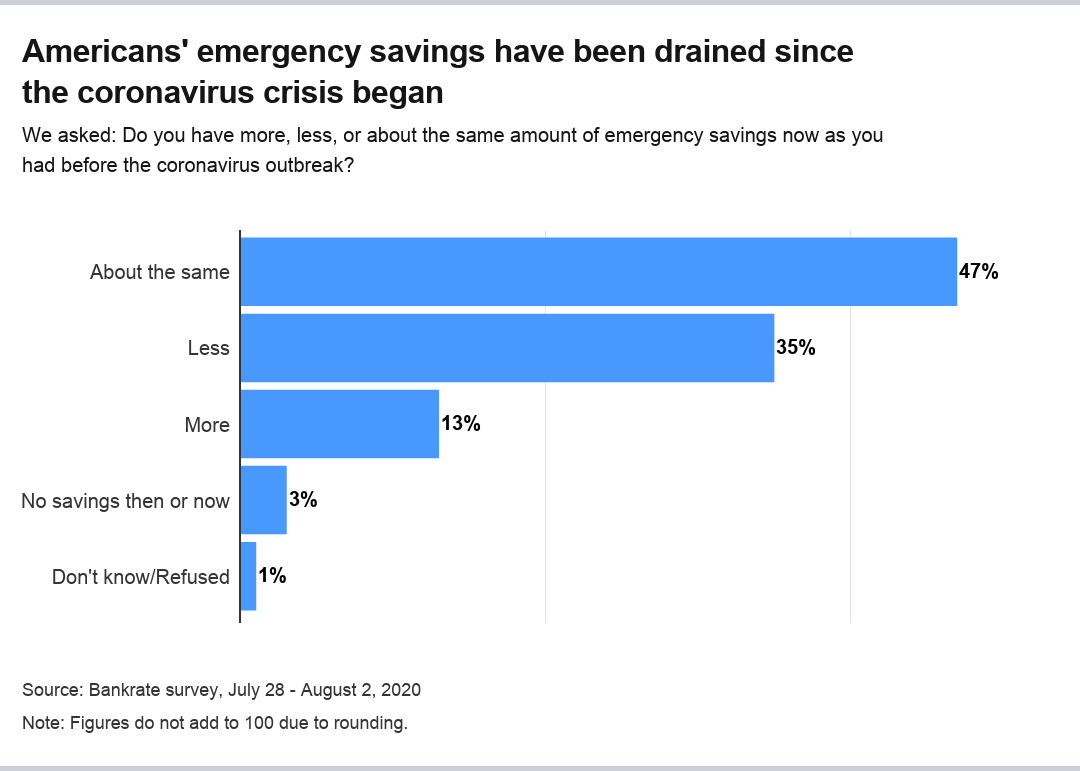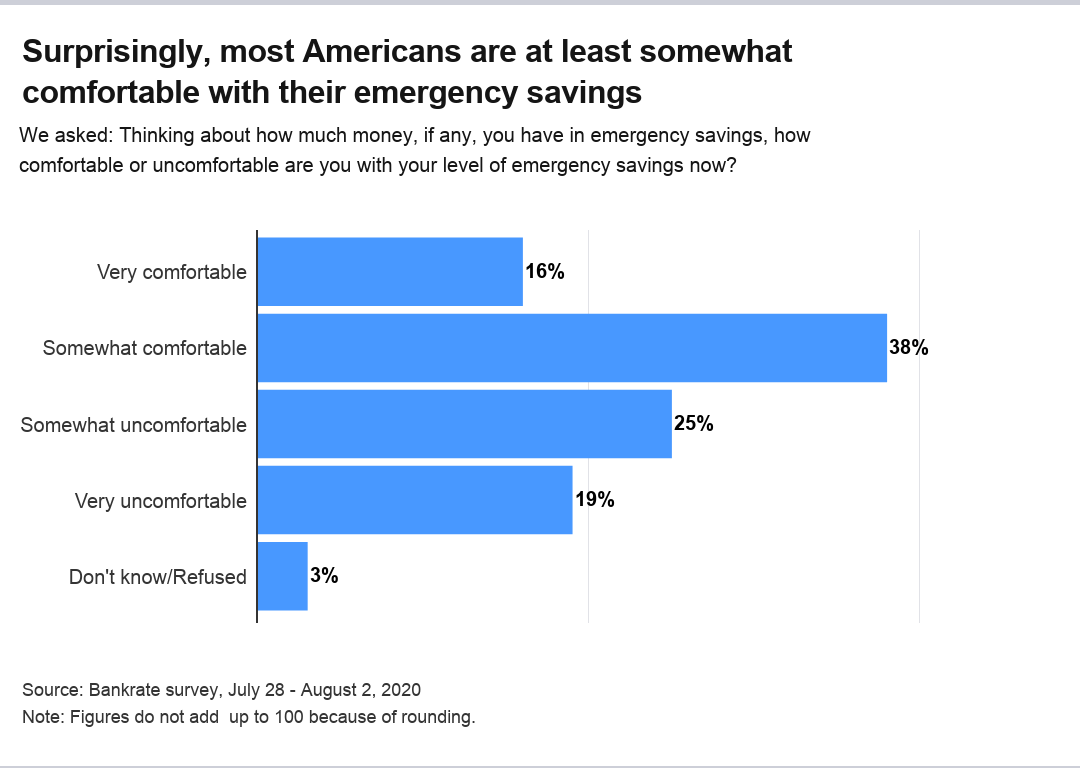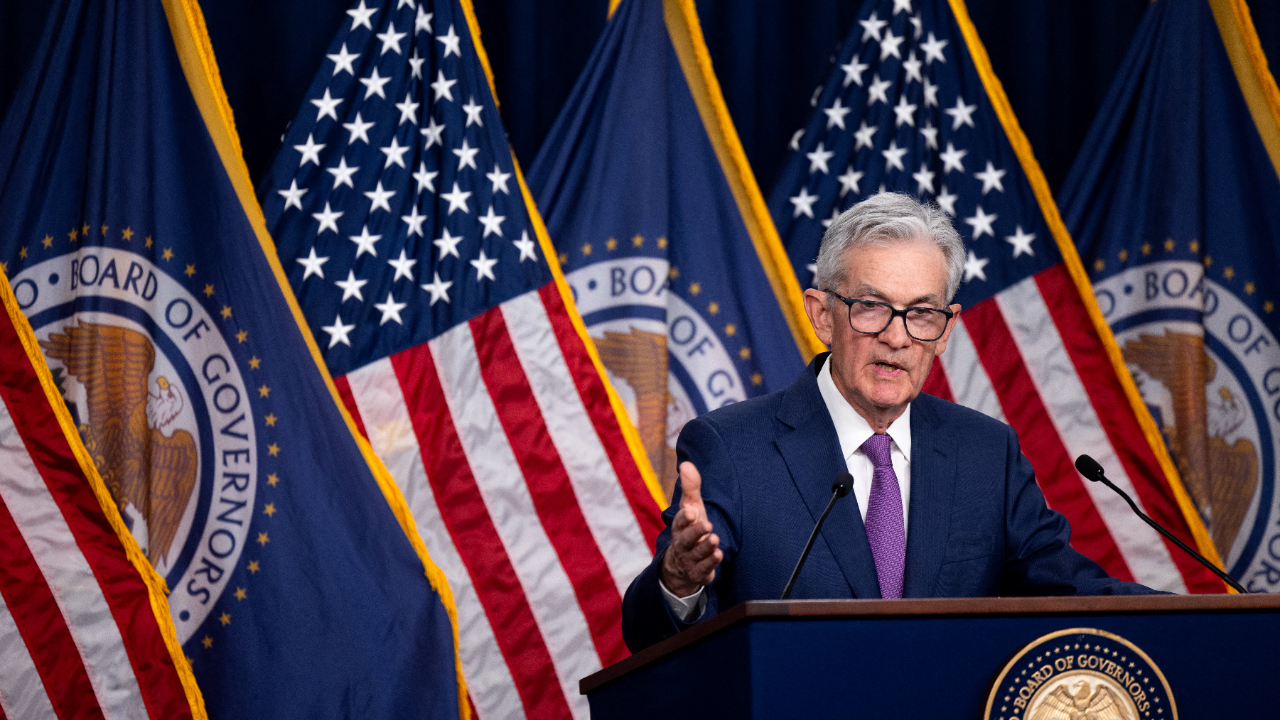Survey: Nearly 3 times as many Americans say they have less emergency savings versus more since pandemic

Americans’ emergency savings are being drained as COVID-19 continues to take a toll, according to a new Bankrate survey. The study shows that the number of Americans with less emergency savings has ballooned since the crisis began, while few Americans have more savings.
About three times as many Americans report having less emergency savings now than before, compared to those reporting more savings. About 35 percent of people said their emergency savings were lower now, compared to 13 percent saying they had more. Only 16 percent of Americans say they are very comfortable with their emergency savings.
“At the time the polling was conducted, federal unemployment assistance was in the process of expiring and without an obvious renewal or replacement, likely contributed to the level of discomfort that millions of Americans felt about their emergency savings,” says Greg McBride, CFA, Bankrate chief financial analyst.
Bankrate surveyed 1,006 American adults about their emergency savings. Below are the main findings from the survey.
Key takeaways:
- About three times as many Americans have less emergency savings now (35 percent) than before the coronavirus pandemic, compared to those who have more (13 percent).
- Just 16 percent of Americans say they are very comfortable with their emergency savings.
- Households earning less than $30,000 a year felt the most uncomfortable with their savings situation.
Emergency savings have been drained
The balance of Americans’ emergency savings has clearly tipped to those having less since the pandemic began. About 35 percent of Americans say they have less emergency savings now than prior to the pandemic, compared to 13 percent who say they have more savings now. Around 47 percent of Americans have the same emergency savings as before the crisis.
Stunningly, 21 percent of Americans say they have no emergency savings, the lowest in the 10-year history of the Bankrate poll. Those with some emergency savings but less than three months’ worth notched the highest level in the poll’s 10 years, at 27 percent.
Just 1 in 5 respondents said they had enough emergency savings to cover three to five months of expenses, a seven-year high.
Meanwhile, only 25 percent of Americans have enough to cover six months of expenses. That figure is up from last year, when 18 percent said they’d be able to cover six months. However, it’s still below the range of 28 to 31 percent seen in the survey between 2016 and 2018.

Americans are comfortable with their emergency savings
Given the relatively low levels of emergency savings, it might be surprising that so many Americans have some comfort with their emergency savings, as the survey shows. In total, 54 percent say they are at least somewhat comfortable, while 44 percent say they are at least somewhat uncomfortable. About 3 percent didn’t know or declined to answer the question.
Here’s how those numbers break down:
- Only 16 percent of Americans say they are very comfortable with their savings, while 38 percent report they are somewhat comfortable.
- About 19 percent of respondents say they are very uncomfortable with their emergency savings, while 25 percent say they are somewhat uncomfortable.

“More Americans have some emergency savings socked away, but what they have isn’t enough to give them a warm and fuzzy feeling amid so much economic carnage,” says McBride.
Of those who said they are somewhat or very uncomfortable with their emergency savings, 77 percent had no emergency savings or not enough for three months of expenses.
Compare that to those who said they are somewhat or very comfortable with their savings, where 67 percent said they have at least enough savings to cover costs for three months.
The survey suggests that Americans who had little savings since before the pandemic are most likely to have very little savings now. That is, the pandemic hit the least prepared the hardest.
Of those who have less savings now than before the pandemic, 64 percent said they have no emergency savings or less than enough to cover three months of expenses.
And of those with less emergency savings, nearly 60 percent say they are now somewhat or very uncomfortable with their savings.
Meanwhile, those with more savings largely report being satisfied.
Of those who have more savings now than before, 70 percent said they are somewhat or very comfortable with their emergency savings.
Lower-income workers stung by pandemic
Lower-income households were hit the hardest by the pandemic. In fact, those with incomes below $30,000 a year were the only income group where a majority of the respondents were somewhat or very uncomfortable with their emergency savings, at 75 percent.
A majority of all households earning more than $30,000 a year reported being somewhat or very comfortable with their emergency savings, including:
- 59 percent of those making $30,000 to $49,999 a year.
- 51 percent of households with $50,000 to $74,999 a year.
- 70 percent of households with $75,000 a year or more.
Other results continue to show the divide between those earning higher and lower incomes.
About 46 percent of households earning more than $75,000 a year had enough to cover six months of expenses. In contrast, only 11 percent of those earning $30,000 or less did.
Similarly, about 39 percent of these lower-earning households had no emergency savings, compared to only 7 percent of their higher-earning counterparts.
Some 44 percent of households earning less than $50,000 reported less emergency savings now than before the pandemic, compared to nearly 28 percent of those earning more than $50,000 a year.
Younger baby boomers have particularly weak savings, with 26 percent of those aged 56-65 having no emergency savings, just edging out younger millennials (age 24-30) as most vulnerable.
Boomers aged 56-65 are also among the least likely to cover at least six months of expenses, with just 20 percent able to do so using emergency savings. That was lower than every group except millennials at 18 percent.
Methodology
This study was conducted for Bankrate via online interview by SSRS. Interviews were conducted from July 28 – Aug. 2, 2020 among a sample of 1,006 adults. Data are weighted and are intended to be representative of all U.S. adults, and therefore are subject to statistical errors typically associated with sample-based information.
You may also like

Fed remains on hold, keeps forecast for three rate cuts in 2024




